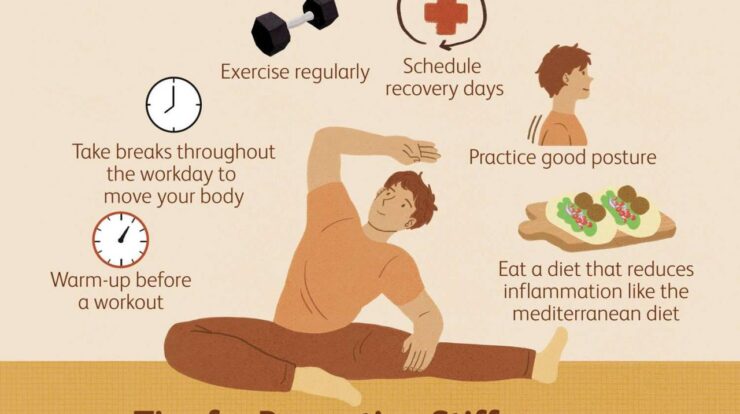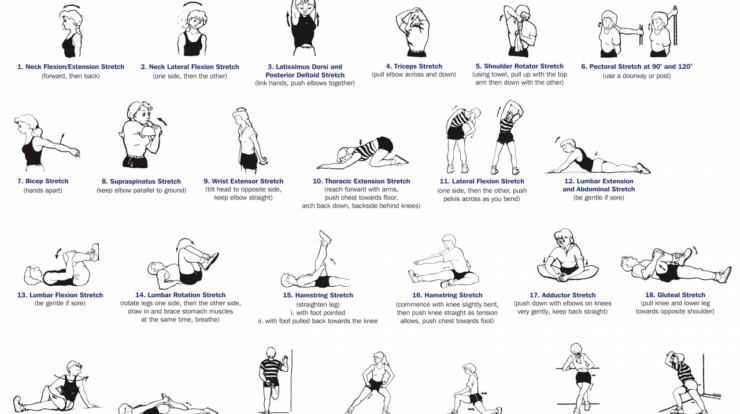
How to cure gum disease without a dentist? It’s a question that plagues many people who suffer from this common oral health issue. The good news is that there are a number of effective home remedies and over-the-counter treatments that can help you get rid of gum disease and restore your oral health.
In this article, we’ll provide you with a comprehensive guide to curing gum disease without a dentist. We’ll cover everything from natural remedies to dietary modifications to lifestyle changes. So if you’re ready to say goodbye to gum disease, read on!
Natural Remedies
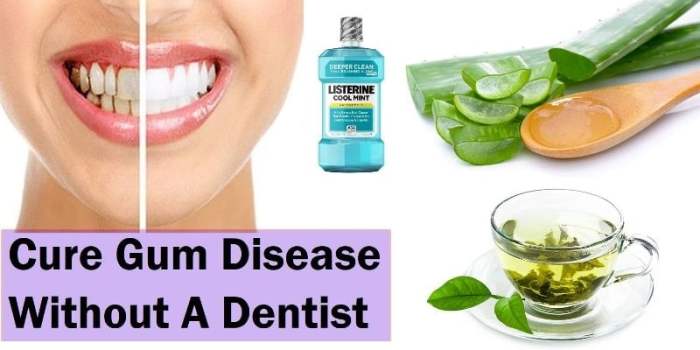
Yo, if you’re trying to ditch gum disease without dropping mad cash on a dentist, natural remedies got your back. These DIY tricks won’t give you that pearly white smile overnight, but they can help calm the inflammation and keep your gums healthy.
Just remember, they’re not a replacement for brushing and flossing, so don’t slack on the basics.
Salt Water Rinse
- Mix a teaspoon of salt in a cup of warm water.
- Swish it around your mouth for a minute or two.
- Salt helps reduce inflammation and kills bacteria.
Baking Soda Paste
- Mix a teaspoon of baking soda with a little water to form a paste.
- Brush your teeth with it for a couple of minutes.
- Baking soda neutralizes acids and helps remove plaque.
Tea Tree Oil
- Dilute a few drops of tea tree oil in a cup of water.
- Swish it around your mouth for 30 seconds.
- Tea tree oil has antibacterial and antifungal properties.
Over-the-Counter Treatments
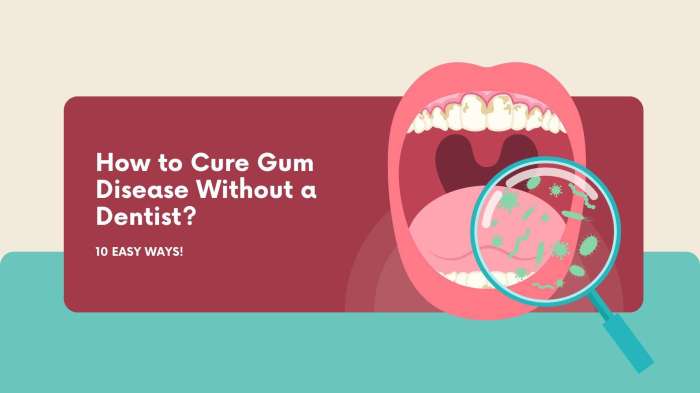
Over-the-counter treatments for gum disease are widely available and offer a convenient way to manage the condition. These treatments typically target reducing inflammation, eliminating bacteria, and promoting healing.
Common over-the-counter treatments include:
Mouthwashes, How to cure gum disease without a dentist
- Antiseptic mouthwashes, such as chlorhexidine and cetylpyridinium chloride, kill bacteria and reduce plaque.
- Fluoride mouthwashes strengthen teeth and prevent cavities.
- Anti-inflammatory mouthwashes, such as those containing chamomile or aloe vera, soothe irritated gums.
Gels
- Antibacterial gels, such as metronidazole and minocycline, kill bacteria and reduce inflammation.
- Fluoride gels strengthen teeth and prevent cavities.
- Anti-inflammatory gels, such as those containing aloe vera or hyaluronic acid, soothe irritated gums.
Toothpastes
- Antibacterial toothpastes, such as those containing triclosan or stannous fluoride, kill bacteria and reduce plaque.
- Fluoride toothpastes strengthen teeth and prevent cavities.
- Anti-inflammatory toothpastes, such as those containing chamomile or aloe vera, soothe irritated gums.
While over-the-counter treatments can be effective in reducing gum disease symptoms, they are not a substitute for professional dental care. It’s important to consult a dentist for a proper diagnosis and personalized treatment plan.
Over-the-counter treatments can have potential side effects, such as:
- Tooth staining (chlorhexidine mouthwashes)
- Gum irritation (antibacterial gels)
- Increased tooth sensitivity (fluoride toothpastes)
Always read and follow the instructions on the product label carefully and consult a healthcare professional if you experience any adverse effects.
Dietary Modifications
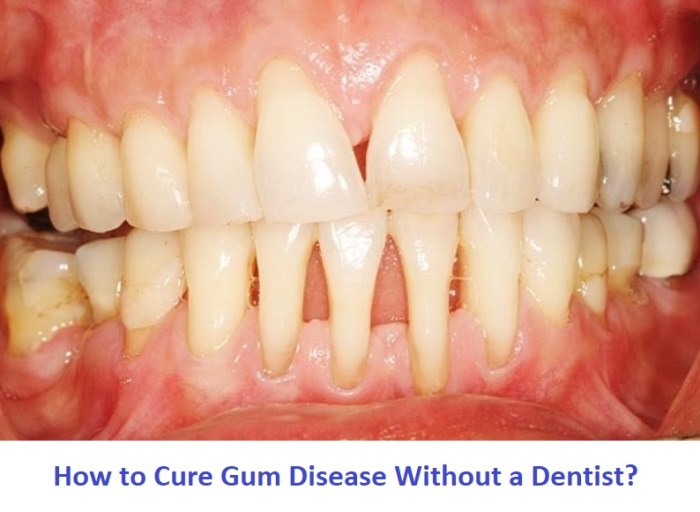
Chow down on the right foods to keep your gums healthy. It’s like giving your mouth a high-five with every bite!
Yo, listen up! If your gums are buggin’ you, don’t be a square and go to the dentist. Check this out, how to cure gum disease without a dentist . It’s the real deal, homie. Get rid of that nasty gum disease without breaking the bank.
Fruits and veggies are like the Avengers for your gums. They’re packed with vitamins and minerals that help strengthen your teeth and gums. Dairy products, like milk and cheese, are also MVPs because they contain calcium, which helps keep your teeth strong.
Sugary Treats and Processed Carbs
On the flip side, sugary treats and processed carbs are like villains for your gums. They feed the bad bacteria in your mouth, which can lead to gum disease. So, limit these foods and opt for healthier options instead.
Lifestyle Factors
Gum disease is not just a matter of poor oral hygiene. Lifestyle factors can also contribute to its development and progression. Smoking, stress, poor sleep, and lack of exercise can all take a toll on your oral health.
Smoking
Smoking is one of the worst things you can do for your gums. It damages the tissues that support your teeth, making them more susceptible to infection. Smoking also reduces the amount of oxygen in your blood, which can slow down healing and make it harder for your gums to recover from damage.If
you’re a smoker, quitting is the best thing you can do for your oral health. There are many resources available to help you quit, including support groups, counseling, and medication.
Stress
Stress can also contribute to gum disease. When you’re stressed, your body releases hormones that can damage the tissues in your mouth. Stress can also lead to poor oral hygiene habits, such as skipping brushing or flossing.There are many things you can do to manage stress, including exercise, yoga, meditation, and spending time in nature.
If you’re feeling overwhelmed, talk to a therapist or counselor.
Poor Sleep
Poor sleep can also increase your risk of gum disease. When you don’t get enough sleep, your body doesn’t have time to repair itself. This can lead to a weakened immune system, which makes you more susceptible to infection.Aim for 7-8 hours of sleep each night.
If you’re having trouble sleeping, talk to your doctor.
Exercise
Regular exercise is good for your overall health, and it can also benefit your oral health. Exercise helps to improve blood circulation, which can bring oxygen and nutrients to your gums. Exercise can also help to reduce stress, which can also benefit your oral health.Aim
for at least 30 minutes of moderate-intensity exercise most days of the week.
Home Care Techniques
Yo, what’s up homies! Gum disease ain’t no joke, but don’t trip, you can totally slay it without dropping a dime on the dentist. Check it, we’re about to drop some mad knowledge on home care techniques that’ll make your gums dance with joy.
Brush and Floss Like a Pro
Step 1: Grab a soft toothbrush. Hard bristles are like a bully to your gums, so keep it chill with soft ones.
Step 2: Squirt some fluoride toothpaste on that brush. Fluoride is your gum’s best bud, protecting them from cavities and bad breath.
Yo, listen up! Got gum disease but can’t hit up the dentist? No stress. Check out this sick link how to cure gum disease without a dentist . It’s got the lowdown on DIY gum care that’ll have your pearly whites looking fresh in no time.
Peace out!
Step 3: Hold your brush at a 45-degree angle and go ham on those pearly whites. Brush in small circles, making sure to hit all the nooks and crannies.
Yo, got some gum disease but can’t hit up the dentist? Don’t sweat it, fam. Check this out: how to cure gum disease without a dentist . It’s got all the lowdown on DIY gum disease cures that’ll have your smile shining brighter than a disco ball.
Peace out, gum disease!
Step 4: Don’t forget your floss! It’s like a tiny ninja that gets into the tight spots where your toothbrush can’t reach. Slide it up and down each tooth, making sure to hug the gum line.
Yo, check this out if you wanna know how to cure gum disease without a dentist. How to cure gum disease without a dentist got you covered with all the info you need to get rid of those pesky gum problems.
Toothbrush and Toothpaste Essentials
Not all toothbrushes are created equal. Choose one with a small head and soft bristles. Electric toothbrushes can also be a game-changer, especially if you’re not the most patient brusher.
When it comes to toothpaste, fluoride is a must. It’s like a shield for your teeth and gums, protecting them from decay and gum disease.
Interdental Brushes, Floss Picks, and Water Flossers
These bad boys are like the SWAT team for your teeth. They get into those hard-to-reach areas and clean up the mess that your toothbrush and floss might miss.
Interdental brushes are tiny brushes that fit between your teeth. Floss picks are like floss on a stick, making it easier to get into those tight spots. And water flossers use a stream of water to blast away food particles and bacteria.
End of Discussion: How To Cure Gum Disease Without A Dentist
Gum disease is a serious condition, but it’s one that can be easily prevented and treated. By following the tips in this article, you can keep your gums healthy and your smile bright.
Question & Answer Hub
Can I cure gum disease at home?
Yes, you can cure gum disease at home with natural remedies and over-the-counter treatments. However, if your gum disease is severe, you may need to see a dentist for professional treatment.
What are the best natural remedies for gum disease?
Some of the best natural remedies for gum disease include salt water, baking soda, and tea tree oil. These remedies can help to reduce inflammation, kill bacteria, and promote healing.
What are the best over-the-counter treatments for gum disease?
Some of the best over-the-counter treatments for gum disease include mouthwashes, gels, and toothpastes that contain antibacterial ingredients. These treatments can help to reduce inflammation, kill bacteria, and prevent gum disease from progressing.
What dietary modifications can I make to help prevent and treat gum disease?
Some of the best dietary modifications you can make to help prevent and treat gum disease include eating a healthy diet that is rich in fruits, vegetables, and dairy products. These foods can help to promote oral health and prevent gum disease from developing.
What lifestyle changes can I make to help prevent and treat gum disease?
Some of the best lifestyle changes you can make to help prevent and treat gum disease include quitting smoking, managing stress, and improving your sleep habits. These changes can help to improve your overall health and well-being, which can lead to better oral health.
